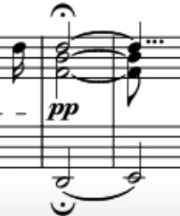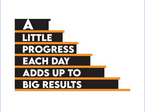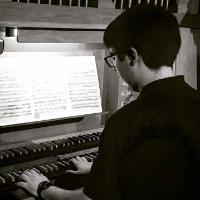Leaderboard
Popular Content
Showing content with the highest reputation on 04/23/2025 in all areas
-
Hi everyone, I would like to share with you my first major composition: a string quartet. My compositional style is evident in it, which is quite unusual, but at the same time I think it is accessible to a wider audience. I'd appreciate it if you gave it a listen! Thank you! https://youtu.be/WPfU9OKB8Aw?si=EFZEiZDdlTbWXOnu2 points
-
Wow I did not expect this to be completed in such a short amount of time after I had posted the work in progress thread a week ago. That's a record. Though, I guess I did work on in beforehand. Still though, glad this one is not stuck in work-in-progress purgatory, just like the others... Anyways, since the latest progress, I've modified the return to the first theme, most notably, a flurry of ascending scale on b.105 followed by a trilled downward passage of the theme. This is done to kick start the momentum of the piano's spotlight on the proceeding bar instead of just the piano reciting the theme alone in the 2022 version. Another drastic change is that I've turned the passage from b.112 onwards to be a build-up for a proper, actual climax at b.118. Additionally, I've fixed the many of the pitch spelling errors and, of course, tidied up the score as well. There are other smaller changes on the piece as whole, but I'm not gonna list them here. I'm really really happy I did this revision 'cus, again, I just love the themes in this and it's worth putting it to my current musical knowledge. It feels satisfying and gratifying. Old version for comparison: Progress Thread (wow i posted only two progresses on there) Hope you all enjoyed this and lemme know what you think! Thank youuuu edit: thanks to @pateceramics for pointing out the ineffective rhythmical change on bar 5-7.1 point
-
Any and all feedback (for example if the high arpeggio notes are too repetitive) and advice is appreciated. I like the piece but can’t really think of any new ideas for it1 point
-
ello everybody, I've spent many months working on three short new piano pieces for beginning to intermediate students. These are originally intended for children to play, but could also be for beginning adults. In these pieces, I've also tried to discover my own voice and style, do let me know how I've done in those areas. Other feedback related to technique, harmony and playability would be much appreciated. Poem 1: "based on a theme by Beethoven", updated score Poem 2: "the quirky detective", updated score Poem 3: "the crazed capybara", score1 point
-
The Image in G major is the third piece of the four piano pieces I wrote for relaxation after writing the very heavy String Sextet. I try to do something a bit different than the previous two pieces, as I actively use more quartal chords and pentatonics in the whole piece, and also invite a bit of impressionistic chords. This is my personal favourite of the set. Here is the score and YT video: (Final) Image in G major.pdf Like the previous pieces, this one also comes from recycled materials. It comes from an unfinished Piano Suite I composed in 2016 Jan, but only with fragments of it including the first few bars, b.35-38 LH melody and some parts of b.58-72. Don’t know why I went for pentatonics that long ago LoL! One thing to note: b.43-46 is probably inspired by @Fugax Contrapunctus Pabio’s mention of Joe Hisaishi in his review of my Sextet, plus my recent listening experience of his music while watching Miyazaki’s films. Hope you enjoy this small piece! Henry1 point
-
This is a setting of Robert Frost's beautiful poem that I wrote around Easter 2018. Included is an annotated copy with things i'm unsure about. Any feedback is appreciated1 point
-
Hello everyone, I've been working quietly behind the scenes away from Young Composers for the past couple of weeks, working on my compositions and even having occasional practice sessions on my violin and piano. One day, I improvised on my piano and recorded it. I played back the video to myself and found the result so touching that I decided to create a complete composition of it on my Finale software. I'm really happy with this work and dream it will be the next "Song from a Secret Garden," both pieces having origins as solo piano pieces and eventually becoming full-blown orchestral works (in my case, "will" become). Yeah, that's a bit too ambitious, but a guy could always dream, right?! 😄 Your feedback is welcome!(: ~Frank1 point
-
I finished the other two movements hooray!! Here's the YouTube upload. Please let me know what you think so I might apply the advice for future piano works 🙂 As for the piece itself, it's so personal to me I'm not willing to change anything, though I recognise it's not flawless. I think it is my very best piano piece and I'm extremely proud of it despite its issues. I'll do a rundown of the piece real quick so ya'll know what to expect. Movement 1. Sonata form, both themes are derived from the same rhythmic idea. A theme for desolation and a theme for consolation, which alternate in rotations becoming less and less certain until neither resolve. closes on a 6 4 chord. attaca into... Movement 2. Ternary form. A is a waltz with violent interruptions. B is more restless and dramatic. The return to A is based on first movement closing 6 4. Ending of A is infected with B motifs. Closes with a satisfying cadence at last. Movement 3. Ternary form. This movement is meant to be "looking back" at the events of the previous movements. B section is turbulent again. A section returns. The movement closes with a chorale "prayer." attaca into... Movement 4. Sonata form. Opens with a return to the consolation motifs from movement 1. First theme is dramatic and modulates constantly. Second theme is a combination of consolation and prayer. The climax of the development (and I think the climax of the whole piece really) with the minor version of the consolation theme from the first movement is in E minor which is a tritone away from tonic key. Recap has no proper second theme, only fragments. It ends resolved on a single note all by itself. All alone. Thank you for listening and for any feedback :31 point
-
Hi @ComposaBoi! I know I've heard the 1st movement before but am not sure if I reviewed it. I don't hear the following chord in your performance: I just hear a Db both in the left and right hands. Also, didn't you mean to mark this as 8vb? 8vb means an octave lower while 8va means an octave higher: That aside, I find the main theme to be so happy-go-lucky in comparison to the bleak introduction! LoL I think the way you present the main theme in measure 78 is more appropriate to be the main theme proper, being darker and more suited to follow the bleak introduction. I know you said you won't be changing it but I'm going to give you my impressions nonetheless. The version of the main theme at 151 is also nice - not overly happy-go-lucky but rather, bittersweet. The version of the main theme at 220 where it is used as a modulating sequence is really good! I much prefer this treatment of the happy-go-lucky material as it sounds more developmental and suited for modulation. When you return to the material of the bleak introduction the 2nd time it sounds really empty and like the momentum of the piece just stops and falls dead (especially with the left hand staccato notes). The 2nd movement waltz sounds like it really flourishes perfectly out of the 1st movement! It really creates a lucid listening experience. The only thing that brings me out of it is the allegro furioso. I think it sounds way too fast and intense for the bittersweet mood you set with the beginning of the waltz. I like how you reference back to your 1st movement material with the molto meno mosso part. With how fast and furious this part gets it's amazing that you managed to perform it! I think bringing back the dreamy main waltz theme towards the end really releases some of the furious tension you build up with the fast tempo sections. Great job with these two movements! I'm looking forward to reviewing the last two at another time. Thanks for sharing!1 point
-
If you were going for a movie score feel then you got it, because it sounds like the soundtrack for a Marvel movie (not meant as a slight). I do agree with what Peter is saying about the accompaniment overpowering the melodic lines. This is something I have struggled with as well, in sometimes layering too much, and ending up with a muddy mess. It sounds good, but it hinders the ability to focus. I would suggest going through, the softer moments especially, and seeing where you can edit out some of the underscoring, to let the melody shine through a little better.1 point
-
In the Mood for Love is always my fxxking all time favourite film. I watched it several before but only at home’s small screen. Last week I watched the 4K restoration of director’s cut in cinema’s big screen, and fxxk! I got the music much more! I used to feel like this music boring and only functional, but when I got to the cinema, those pizzicatios are really powerful to reflect what the main characters were thinking! And this must be one of my all time fxxking favourite music. The music matches so well with the film itself (in the video it doesn’t correspond though), and I used to cry watching this scene, this time no exception. Also, freakingly beautiful Maggie Cheng and handsome Tony Leung!! As well as the cinematography and direction and art design and costume design!1 point
-
Next is Porco Rossi. I have never heard of this until recently even though it’s a miyazaki film! My favourite must be this one, with the piano version arranged as the set piece for ABRSM grade 8 piece lol: To be honest I love this only after watching the film. I got the resigned and helpless feeling of the music only after watching the film, knowing what Porco Rosso had faced. It’s an insanely good film as well, very unexpected to what I expect in Miyazaki’s film!1 point
-
I have watched quite a lot of films these few weeks and I will share the music one by one! First is Kiki the Delivery Service. Probably this is my favourite. It’s the agitated version of the main theme of the film music when there’s a disaster happening in the town. I love how the danger is depicted with some sort of funniness.1 point
-
Hi Luis! Thank you! I just try my newly acquired style after the Sextet and I quite like the result here. Never listen to Cowell’s piece even though his name is the same as me lol, but honestly I don’t like his idea to hurt the piano strings! Henry1 point
-
Hi my bro, As I have heard all of these before, I think they would be suitable for intermediate children pianist. I like you’re trying to vary your style which is always nice for a composer no matter the result is, and the result here is good. My favourite is poem no.1. No.2 and 3 are quickly funny and I like them too. Thx for sharing! Henry1 point
-
Hi @Alant, Actually I like it as it acts like a good ostinato! For me you can keep adding instruments as different layers with the increasing of layers and colours to increase the intensity of the piece, just like Ravel’s Bolero. Henry1 point
-
3rd movement: Nice melody, and like the arppegiated octave theme. Nice playing in b.23! The theme in b.53 reminds me of the turbulent theme in Chopin’s Fantasies in F minor. Again b.66 should have a Meno Mosso marking I think. 4th movement: I like the reintroduction of the motive from 1st movement with tremolo under it like the coda of 1st movement. I think you can change the key signature earlier. I love the outburst in b.15! It’s kind of foreshadowed in mov.3. The modulation to E major is very unexpected and a nice change! Probably the warmest key ever especially as the tritone key, like how I use that in my Clarinet Quintet and Sextet LoL! I lie b.133 since it’s probably the first time you introduce imitations between hands! You should do more of that! The Rachmanioffian E minor theme is a nice change of the consolation theme! I have no comment towards the ending since I like it. I love the ending too! Who’s not alone in the world, especially for artists! You should be, especially given how difficult this is to perform! Well done Jonathon and thx for sharing! Henry1 point
-
Hey Jonathon! @ComposaBoi Thx for your review on my Sextet, I am going to return the favour to your huge work lol! 1st movement: I like the beginning, though I feel like it can has less repetition and moves more quickly away to the 2nd theme. I like the D flat Major theme as it sounds like Liszt, but I find the exposition repetition too much personally, especially with the very slow first theme! I love the development, it’s much more dramatic especially when tremolo is introduced at the latter half. I also love your modulation to G major, a very distant key as consolation giving its refreshing quality. I love the retransition to B flat Major very much, as with all those diminished 7ths it sounds really Lisztian. I find the B flat Major theme as it bit short, so the return back to tonic minor a bit abrupt for me, but the 1st theme sounds much better with tremolo under it. The reintroduction of 2nd theme in coda is unexpected for me, but it’s lovely. 2nd movement: Like the waltz theme and your flat 6th to denote the dangerous tonic minor. Love the G minor theme, but I find the transition to the quicker variant of A minor in b.93 a bit abrupt for me. Maybe a longer dominant preparation before modulating to A minor? It helps both the transition of harmony and speed. I love your return to the open transition from the 1st movement before returning to the 2nd movement first theme! The quick part reminds me of the Scherzo of Chopin’s 2nd movement, though less crazy here haha. B.222 should add a further Meno Mosso for an even slower tempo!1 point
-
I do agree with you on the issue of balancing, and I can also see how the melodic choices I made didn't contribute much toward melodic development. As I said in my response to the initial feedback you gave, I went through with a new friend of mine who was willing to take his free time to instruct me on some of the Music Theory material that I was unfamiliarized with, that related to some of the things he noticed wrong with it, which were much in line with what your critique of it has been so far. So moving forward, I'll be looking to improve upon what you've mentioned, among other things as well. do always appreciate your feedback, and will be using this information to further progress my skill in dabbling with composition. And I do hope that you were able to enjoy this piece, despite the issues with it. I feel that with this one, I at least had some awesome chord modulations 😅 Especially there at the end, modulating back to the original key of F minor, just before the transition from strings harmonies to brass harmonies.1 point
-
1 point
-
Hi this is a piano piece I'm working on, it's almost done and needs some touching up. It uses a set. Would love feedback and thoughts on it.1 point
-
Yeah that chord i was wanting to change in bar 14. As for experimenting with rhythm I sorta kept it simple just cuz I don't really have lots of experince playing this type of music. Right now I'm learning Schoenburgs op11 so hopefully some of his ideas rub off on me. I usually write what I can play but even still I think I could've added triplets or sixteenth notes at the least to vary it. I'll see about adding more experimentation in terms of rhythm.1 point
-
Nice work! I like the dreamy quality you evoke with your orchestration, and the mood changes you create. The lamentoso sections were my favourite.1 point
-
1 point
-
Hi again @UncleRed99! My perception hasn't changed by much, but I think I can better explain why I perceive the piece the way I perceive it. I can hear that you definitely intend there to be a main melody leading the piece from beginning to end but there are a few factors that (in my opinion) prevent this from being a lucid listening experience for the listener. Sometimes the melody is just overpowered by chords in the orchestra played loudly while a single solo instrument is playing the melody and it doesn't really get heard. The most obvious example being the bass clarinet melody in bar 5. There are also other examples where you kind of create a polyphonic/heterophonic texture where it becomes kinda hard to hear which instrument is supposed to be the focus or main melodic line. There are ways to make polyphonic/heterophonic textures work though but that would necessitate them being more self-similar and use a higher economy of means to achieve a more obvious audible relation to each other. While if that isn't achieved, then it can end up sounding like you're just noodling around in a certain key. Although I don't want to neglect to give you credit where credit is due. You definitely have a recognizable motif that permeates this piece: It's just that this is a very short recognizable motif that is just repeated throughout the piece without really being used to develop it by using it as the dynamo and origin of all of your other melodic material. When the other material isn't connected together it can sound dissolute and lacking in direction or focus. That's my perception of the piece. I'm glad you're so determined to continue to improve and I hope some of what I said can help you further on your journey!1 point
-
I got a ping today that I am not active on here much anymore. Last August, I became bedbound with ME/CFS and have seen a steady drop in my abulities to do anything. From 50% functioning, to 40 to 30 to 20 to 10 to 5. Some days I can barely lift my head to eat. There is talk of putting me in a nursing home when my mom goes back to work this fall. I’m only 22! Oobleck, which I’ve posted here before, was written primarily in the first month of my illness. Before things became really bad. When I was still hopeful I would be better by “X” date. “It’s just the flu,” and “I’ll be ready to go back to school by fall break,” turned into a slow melting away of my entire life. Moving back home with my mom, leaving my friends, my college city, my life I had built, and having to start completely from scratch with a body that leaves me in 9/10 pain and dysfunction daily. It is a very potent work. Perhaps my first real “piece of art.” I am proud of creating something that is truly me. It is not about enjoyment, it is about the experience. I can dub the work as “Mahler, but with quarter tones.” I won’t be writing or doing much of anything for the next while. My life is too covered in oobleck. Program Note: The term oobleck is a type of substance that, when supported with pressure and force, is a solid. However, as soon as this support is removed, it oozes into a sticky liquid. Because of this, the oobleck always feels like it is on the verge of oozing apart into a mess of gunk. Dr. Seuss coined the term, introducing it in his story, "Bartholomew and the Oobleck." Its manifestation in the story is an evil, sticky substance which covers the kingdom it rains down upon. "Oobleck" is an aural exploration of a familiar musical world tainted by oobleck.1 point
-
Hi @Frank Normandy! Thank you for participating in the Christmas Music Event! I think your piece is very charming and bittersweet. I love its simplicity. But it's not without its complexity too which gives it a certain depth because of the non-harmonic tones used on the strong beat in the melody and occasional chromaticism or borrowing from other modes. Thanks for sharing!1 point
-
Hello everyone! I'm new to this platform. I'm a musician who likes to compose music in my free time, although I've never studied composition. Furthermore, I've already made some pieces, but I consider this to be my first "big" work. It's a work based on Bach's "Little Fugue in G Minor" (my favorite composer and piece). It's an incomplete work, it's missing (at least) one last part, which I thought would be a fast "movement" to finish the piece. I'd like to receive comments, criticisms, suggestions... to improve. I'm looking for comments of all kinds: musical, orchestration, stylistic... In this folder, there are the audio, the score and de video with audio+score: https://drive.google.com/drive/folders/1CZZP89RZ6g5gznB45ezyddqK6kdbKroV?usp=drive_link Thank you very much! Fantasia sobre un tema de Bach.mp3 Fantasia sobre la fuga.pdf1 point
-
I just threw up several times yesterday and actually don’t get well for two whole weeks so I am less active here lol…0 points


.thumb.png.8b5b433a341551e913a34392660bc95b.png)












